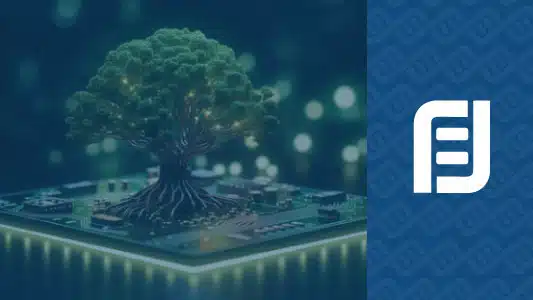As Earth Day approaches and we reflect on the environment, we also reflect on the environmental impact of Information Technology (IT). As the world faces the challenges of climate change and resource depletion, the IT sector is increasingly recognizing the need for sustainable practices. This article explores the growing importance of sustainability in IT and explores green IT practices, energy-efficient technologies, and the pivotal role of IT professionals in fostering a more environmentally friendly and sustainable future.
The Environmental Impact of Information Technology: A Call for Change
The ubiquitous nature of IT in our daily lives has resulted in a significant carbon footprint. From data centers consuming massive amounts of energy to the production and disposal of electronic devices, the environmental impact of IT cannot be ignored. As the demand for digital services continues to rise, addressing this impact has become a critical imperative.
Green IT Practices: Nurturing Sustainable Innovation
Green IT, or sustainable computing, involves the adoption of environmentally responsible practices in the design, manufacture, use, and disposal of IT-related products and services. Here are key green IT practices that organizations can embrace for a more eco-friendly future:
- Energy-Efficient Data Centers: Data centers are a major consumer of energy in the IT sector. Employing energy-efficient technologies, such as advanced cooling systems, virtualization, and server consolidation, can significantly reduce the carbon footprint of data centers. Additionally, locating data centers in regions with access to renewable energy sources helps further mitigate environmental impact.
- Circular Economy Principles: Embracing circular economy principles involves designing IT products with recyclability and longevity in mind. Encouraging the reuse, refurbishment, and recycling of electronic devices helps minimize electronic waste. Manufacturers can play a pivotal role by creating products that are easy to disassemble and upgrade, extending their lifespan.
- Energy-Efficient Hardware: The development and adoption of energy-efficient hardware are crucial for reducing the power consumption of IT devices. From laptops and desktops to servers and networking equipment, prioritizing energy efficiency in hardware design contributes to overall sustainability.
- Cloud Computing Optimization: Cloud computing offers scalability and flexibility, but it also requires significant energy to power data centers. Optimizing cloud usage, implementing efficient resource allocation, and choosing cloud providers with a commitment to renewable energy are steps towards greener cloud computing.
- Remote Work and Telecommuting: The rise of remote work has environmental benefits by reducing the need for physical office spaces and commuting. IT professionals can advocate for and implement remote work policies, minimizing the ecological impact associated with traditional office setups.
Energy-Efficient Technologies: Paving the Way for Sustainability
The pursuit of sustainability in IT is intrinsically linked to the adoption of energy-efficient technologies. The following technologies play a key role in reducing energy consumption and fostering a more eco-friendly IT landscape:
- Renewable Energy Integration: Transitioning to renewable energy sources, such as solar power, is a pivotal step for creating a sustainable IT infrastructure. By powering data centers and facilities with renewable energy, organizations can significantly reduce their carbon emissions.
- Artificial Intelligence (AI) for Energy Optimization: AI algorithms can analyze and optimize energy consumption in data centers and other IT facilities. By dynamically adjusting resources based on demand, AI-driven systems contribute to energy efficiency and reduce waste.
- Internet of Things (IoT) for Smart Buildings: Implementing IoT devices in buildings enables smart energy management systems. Automated lighting, heating, and cooling systems can optimize energy use based on occupancy and environmental conditions, contributing to overall energy efficiency.
- Advanced Cooling Systems: Traditional data center cooling methods can be energy-intensive. Advanced cooling systems, such as liquid cooling and geothermal cooling, provide more efficient alternatives, reducing the overall energy consumption of data centers.
- Green Software Development Practices: Sustainable IT extends to the software development process. Adopting green software development practices involves optimizing code for efficiency, reducing resource-intensive processes, and employing eco-friendly coding standards.
The Role of IT Professionals: Champions of Sustainability
IT professionals play a pivotal role in driving sustainability initiatives within organizations. Here are ways in which IT professionals can contribute to a more environmentally friendly future:
- Advocate for Green IT Policies: IT professionals can advocate for the implementation of green IT policies within their organizations. This includes promoting energy-efficient practices, circular economy principles, and the adoption of sustainable technologies.
- Continuous Learning and Skill Development: Staying informed about the latest advancements in green IT and sustainability is crucial. IT professionals should engage in continuous learning and skill development to understand how to implement and optimize sustainable technologies within their organizations.
- Optimize Data Center Operations: For IT professionals managing data centers, optimizing operations is key. This includes implementing energy-efficient technologies, consolidating servers, and adopting virtualization to reduce the overall energy footprint.
- Collaborate Across Departments: Sustainability is a cross-functional effort. IT professionals should collaborate with colleagues in facilities management, procurement, and other departments to integrate green practices throughout the organization.
- Promote Responsible E-Waste Management: IT professionals can advocate for responsible e-waste management practices. This involves implementing e-waste recycling programs, ensuring proper disposal of outdated equipment, and working with vendors committed to recycling and refurbishing electronic devices.
A Greener Tomorrow through Tech Sustainability
By embracing green IT practices, adopting energy-efficient technologies, and championing sustainability initiatives, businesses and IT professionals can contribute to a more eco-friendly landscape.
The imperative for sustainable IT practices goes beyond mitigating environmental impact; it aligns with the broader goals of corporate social responsibility and future-proofing organizations in an era where environmental considerations are integral to business success. As we navigate the intersection of technology and sustainability, the collaborative efforts of businesses, IT professionals, and technology innovators will shape a greener and more sustainable tomorrow.
Learn how FOGO Solutions can implement a greener IT landscape for your business.

